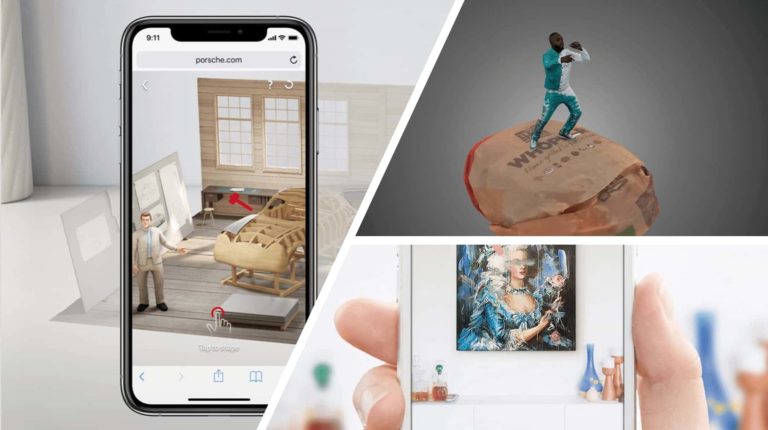
T
here’s growing sentiment in the mobile AR world that apps aren’t the optimal vessel. Yet the technology lives on a device where apps rule. 90 percent of mobile users’ time is spent in apps versus the browser. Can AR break that cycle? And if so, could web AR be the answer?
What is web AR? In short, it delivers AR experiences through the mobile browser. Advantages include dynamism for AR’s serendipity and short sessions, versus the friction of app stores and downloads. There, “activation energy” dampens already-challenged AR adoption.
For example, will consumers spend 90 seconds downloading an app for an experience that lasts 30 seconds? Consider this in light of dynamic AR activations within a store aisle or real-world social interaction. These scenarios happen fast and need AR formats that can be the same.
In these moments of dynamic activation, AR formats that can launch with minimal friction and maximum compatibility will gain the most traction. These factors will also grow in importance as brands and retailers increasingly plant AR activation markers on products and spaces.
But how will web AR reach that potential? What are best practices for web AR experiences and marketing campaigns? And who’s doing it right so far? Our research arm ARtillery Intelligence tackled these questions in its latest report, which we’ve excerpted below.
The Landscape
AR’s most popular touchpoints today include social apps like Snapchat and Facebook. They’ve leaned into AR’s natural alignment with the virality of social content. It enhances the already-popular use case of sharing multimedia. Brand advertisers have also rushed to join the party.
Other AR distribution channels include native apps. These are subdivided by brands’ own apps (e.g., IKEA Place) and third-party apps (e.g., Houzz). Finally, web AR is a less-developed but promising AR channel that delivers AR experiences through the ubiquitous mobile browser.
Among these formats, social lenses lead in terms of consumer AR usage and engagement levels. This is largely due to these channels’ natural fit with AR, and their embrace of the technology by building developer platforms. Snapchat has been a poster child here.
That success will continue among social channels, including recent AR entrants like Instagram and TikTok. But the channel that could see the most growth is web AR. This is due to its practical advantages such as device compatibility and capacity for fast AR activation.
In other words, many app-based AR experiences (including social apps) require users to have a given app first. Requiring them to download said app while trying to activate an AR experience could stall an already-challenged mainstream adoption curve.
Reach Advantage
Web AR also inherits the qualities of the web, meaning interoperability with web standards. For example, web AR campaigns can utilize tools like Google Analytics for nuanced campaign metrics. The same level of performance tracking isn’t possible on other popular AR channels.
Beyond functional advantages, one of web AR’s benefits is its potential reach. Because of mobile platform fragmentation, developers and marketers building AR experiences must choose a lane….or jump through hoops to develop across several platforms.
The web is conversely operable across smartphones. This allows for the widest range of devices that a given AR experience can reach. This is an important consideration, given the relatively small size of the consumer AR base. Fragmentation diminishes that market further.
Synthesizing all these factors, ARtillery Intelligence estimates that web AR’s addressable market is 3.06 billion global smartphones today – the greatest reach of any AR platform. Its active use still trails social apps, but its compatibility makes it the most scalable AR channel.
“Web AR has some nice advantages,” said 8th Wall CEO Erik Murphy-Chutorian. “You’re not tied into a social network. You’re not tied into a platform. You don’t have to go to an app store and you aren’t restricted on devices. You really can get it on most peoples’ phones.”
We’ll pause there and circle back in the next installment for more web AR numbers and narratives…






